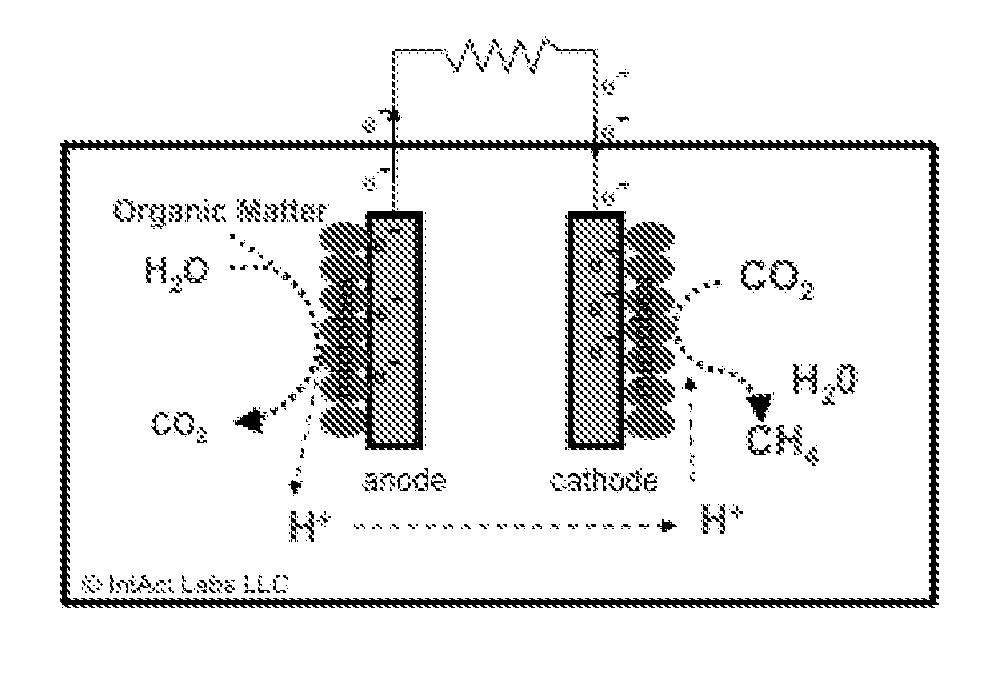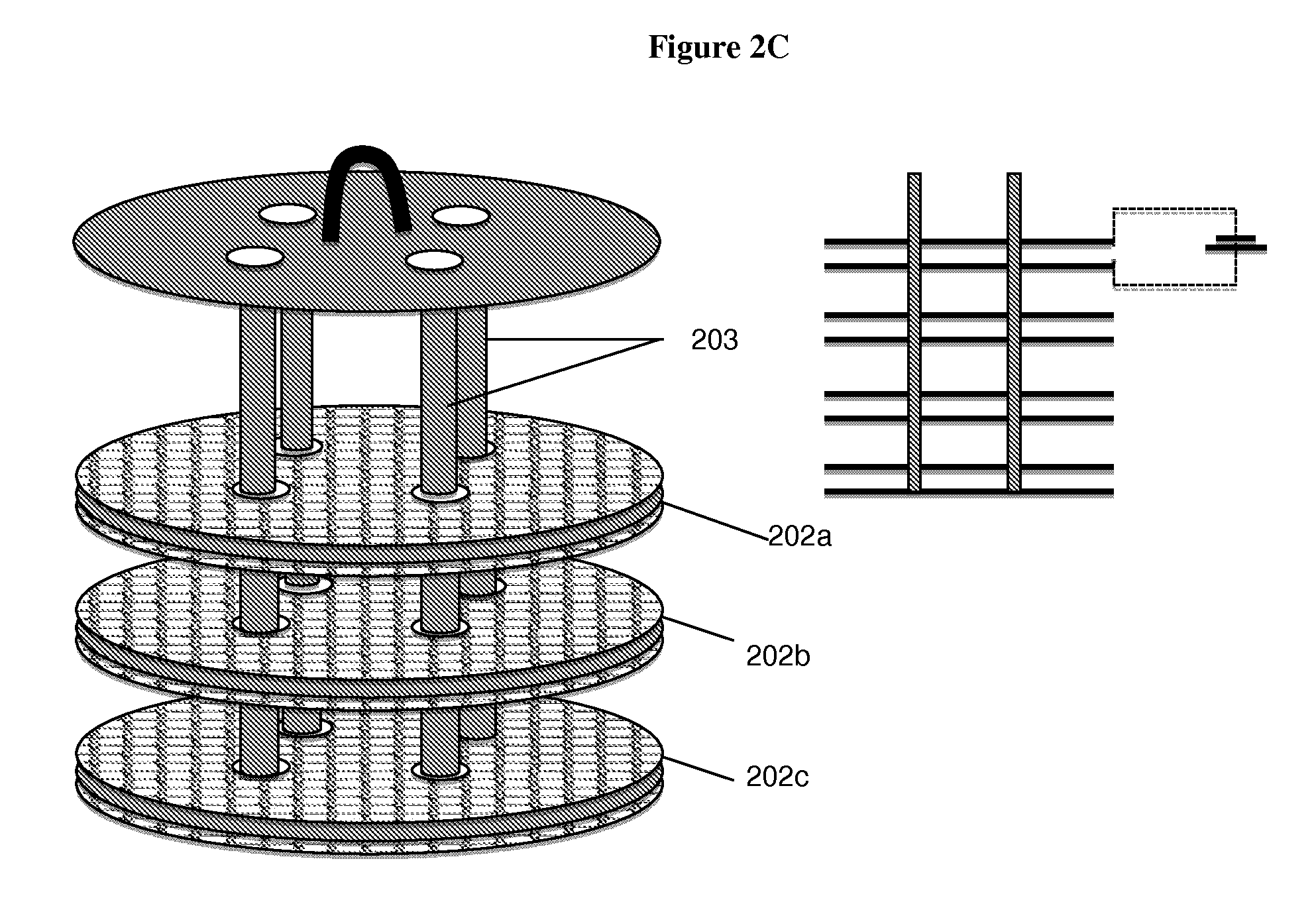Bio-electrochemical system for treating wastewater
a bio-electrochemical and wastewater technology, applied in water treatment multi-stage treatment, separation processes, radioactive contaminants, etc., can solve the problems of high water treatment cost, high retention time and large foot-print required, and current anaerobic digestion methods are typically ineffective for treating water. , to achieve the effect of improving biogas quality, simple and robust system, and increasing wastewater treatment ra
- Summary
- Abstract
- Description
- Claims
- Application Information
AI Technical Summary
Benefits of technology
Problems solved by technology
Method used
Image
Examples
example 1
Bio-Trickling Filter Based Bio-Electrochemical System
[0092]The bio-trickling filter BES system converts a basic biotrickling filter into a bio-electrochemical system. In traditional bio-trickling filters, a sour gas, or any gas that needs to be cleaned, is passed upwards through a solid matrix such as volcanic rock, on which bacteria can grow. Liquid is re-circulated to provide nutrients and to remove liquid reaction products. Usually, in the case of H2S removal, this likely is very acidic, and results in water that must be reacted with a base such as lime.
[0093]In the system shown in FIG. 8 (A=Anodic H2S Oxidation; B=Electrical connection between anode and cathode; C=Porous Electrically Insulating Layer; D=Cathode: CO2 Reduction; E=Recirculation Pump), the solid substrate for growth is replaced by an electrically conductive substrate such as graphite granules or stainless steel wires (A) and (D). In the first design, we separate two chambers with a space or porous electrically insu...
example 2
Alternative Bio-Trickling Filter Based Bio-Electrochemical System
[0094]An alternative to the design presented above is shown in FIG. 9 (A=Anodic Compartment (gas / liquid phase); B=Electrical connection between anode and cathode; C=Cathodic Compartment (liquid phase); D=Recirculation Pump; E=Baffle for collection of cathodic gas generation), which utilizes the entire trickling filter as an anode compartment (A). In this case, the media can be a conductive solid matrix such as graphite granules or stainless steel wires, or any other conductive substrate. H2S and other gas species are oxidized at the anode and liquid flowing over the substrate trickles the reaction products into the cathode chamber (C). Depending on the reaction products, cathodic reduction in the liquid phase will likely evolve gas, such as hydrogen, which can be collected via a baffle (E) and used as a value-added product or combined with the cleaned biogas to generate a higher value stream. The baffle is optional and...
example 3
Combined Anaerobic Digestion and H2S Filter Based on Bio-Electrochemical System
[0095]In the BES system architecture shown in FIG. 10 (A=Anaerobic Digester; B=Electrodes, in which gas phase is anode and liquid phase is cathode), the H2S scrubbing technology described above is coupled with an anaerobic digester. An anode oxidizes hydrogen sulfide in the gases while a cathode reduces CO2 and other elements within the liquid portion of the stream or influent. A voltage can be applied between anode and cathode to optimize rates of oxidation and reduction by the plurality of methanogenic and electrogenic microbes on the electrodes. The result is biogas or natural gas which is sweeter (e.g. lower in hydrogen sulfide) and more abundant in methane versus CO2 than otherwise would be. The electrodes can be any shape or material including, but not limited to flat graphite or stainless steel discs, or graphite granules or any matrix media that is conductive. The electrodes provide support for ba...
PUM
| Property | Measurement | Unit |
|---|---|---|
| Electrical conductor | aaaaa | aaaaa |
| Electric potential / voltage | aaaaa | aaaaa |
Abstract
Description
Claims
Application Information
 Login to View More
Login to View More - R&D
- Intellectual Property
- Life Sciences
- Materials
- Tech Scout
- Unparalleled Data Quality
- Higher Quality Content
- 60% Fewer Hallucinations
Browse by: Latest US Patents, China's latest patents, Technical Efficacy Thesaurus, Application Domain, Technology Topic, Popular Technical Reports.
© 2025 PatSnap. All rights reserved.Legal|Privacy policy|Modern Slavery Act Transparency Statement|Sitemap|About US| Contact US: help@patsnap.com



